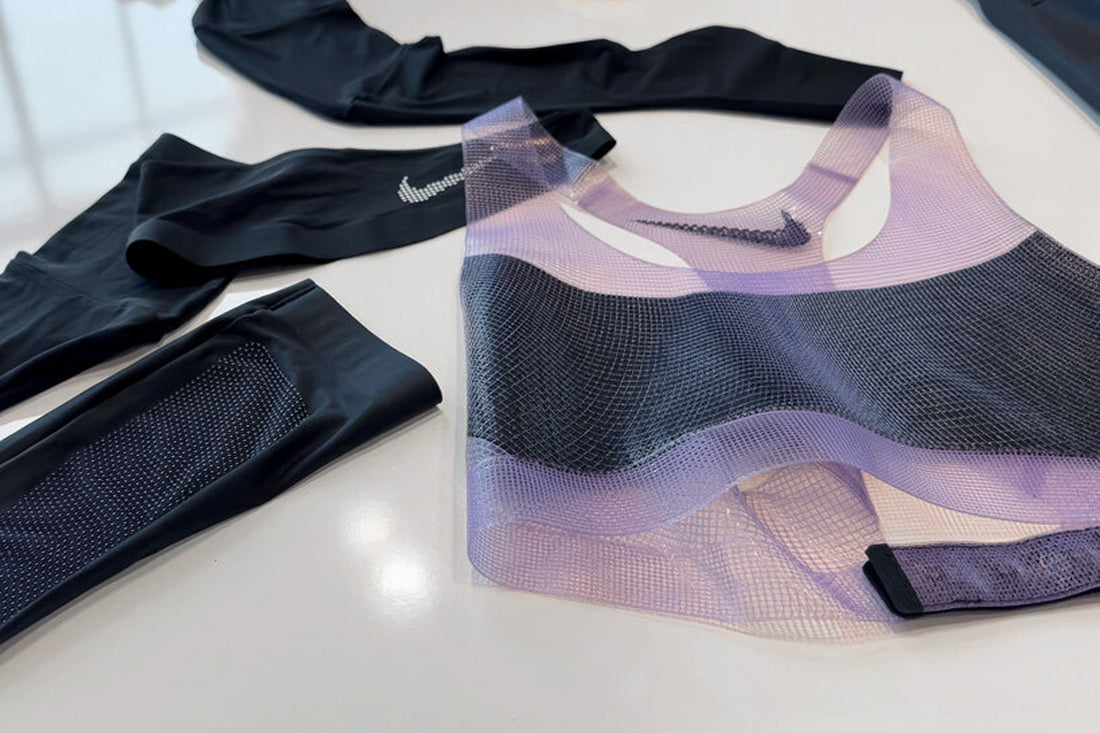Nike recently unveiled a collaboration with Olympic champion Faith Kipyegon: the FlyWeb, a 3D-printed sports bra marketed as “innovative” and “breakthrough.” The brand frames it as the future of high-performance gear, highlighting airflow, lightweight design, and “responsive athletic support” as its defining features.
At first glance, it’s hard not to be impressed. The FlyWeb is visually striking, custom-made, and designed after “years of experimentation.” Nike describes the bra as capable of delivering support without compression, relying instead on a structured polymer mesh that becomes denser in areas requiring “containment.” The concept is bold: no seams, no layers, no traditional straps - just structural support through design.
But the real question is: does this innovation address the real problems women face with sports bras?
Airflow vs. Support: What Matters Most
Nike emphasizes airflow as the FlyWeb’s key differentiator. Their VP of Apparel Innovation even notes, “You can actually feel the air on your chest. Most women have never experienced that while running.” True - airflow may feel refreshing, particularly in hot or humid climates. But is this the top priority for athletes?
Across sports and physically demanding professions, women consistently report their biggest challenges as chafing, digging straps, inadequate support, and pain caused by excessive breast movement. None of these issues are solved by airflow alone.
And here lies the compromise: to achieve airflow and feather-light construction, support has been minimised. Nike claims the structure eliminates the need for compression or underbands. Yet research from the University of Portsmouth - the world leader in breast biomechanics - shows that up to 80% of a sports bra’s support comes from the underband. Without it, true high-impact support becomes questionable.

Who Really Benefits?
It’s also worth noting that the FlyWeb was custom-printed for Faith Kipyegon, an elite distance runner with a very small bust. For her, the bra may feel supportive enough - because there’s little weight to control in the first place. Nike does not disclose the size range of their testers, making it difficult to evaluate whether this design could serve women with average or larger breasts who experience significant breast movement during exercise.

This is where innovation risks becoming illusion. A product can be both groundbreaking and limited. The FlyWeb may work for some - but it does not address the universal needs of women who rely on bras to reduce strain, prevent injury, and support their bodies under impact.
The Bigger Picture
Stories abound of women forced to undergo breast reduction surgeries, suffer premature sagging, or even retire from demanding careers because of inadequate breast support. These are not fringe cases - they reflect systemic neglect in designing performance gear that prioritizes women’s real needs.
Airflow may be pleasant, but no athlete’s career has ever been cut short for lack of breeze across the chest. Many, however, have been derailed by injuries and discomfort caused by insufficient breast support.
The Question We Should Be Asking
Nike’s FlyWeb is innovative - but only within a narrow context. It highlights airflow and aesthetics at the expense of addressing the most critical performance factor: support.
So the question is this: Should women continue to compromise support in exchange for airflow and lightweight materials? Or is it time to demand sports bras that finally deliver both?

Leave a comment